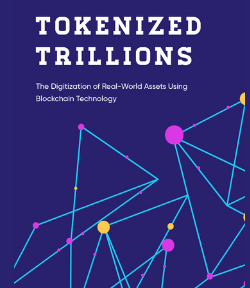
Bitcoin’s history has been defined by periods of euphoric highs and sobering corrections — but every lasting rally has been underpinned by one thing: structural shifts in the way the world engages with digital assets. In August 2025, a perfect storm of regulatory breakthroughs, institutional adoption, and financial innovation is reshaping the investment landscape. This isn’t just another upcycle — it could be the beginning of Bitcoin’s most powerful run yet.

1. U.S. Regulators Are Opening the Floodgates
For years, U.S. policy uncertainty has been the single largest barrier to institutional capital entering crypto at scale. That’s changing. Under Project Crypto, the CFTC has authorized spot crypto trading on registered futures exchanges.
This is a game-changer for three reasons:
-
Compliance-first infrastructure means hedge funds, pension funds, and large asset managers can trade Bitcoin and Ethereum without fear of falling afoul of regulators.
-
Unified market access allows for both futures and spot in one regulated venue, improving liquidity and price discovery.
-
Onboarding speed increases — institutions can plug into existing exchange relationships rather than building bespoke crypto custody from scratch.
For Bitcoin, this is the regulatory “green light” Wall Street has been waiting for.
2. SEC Clarity Unlocks a $68B DeFi Sector
The SEC’s recent declaration that liquid staking tokens (LSTs) are not securities removes a legal cloud that has hung over DeFi staking for years.
Why it matters for Bitcoin:
While LSTs are primarily an Ethereum-based product, the ruling signals a broader regulatory willingness to distinguish between utility tokens and unregistered securities. That precedent strengthens the case for Bitcoin’s status as a commodity and reduces legal risk for products built on top of BTC — including wrapped Bitcoin (wBTC), Lightning Network integrations, and emerging yield strategies.
3. Tokenized Stocks Bring Wall Street to the Blockchain
Platforms like Coinbase, Kraken, and Robinhood are expanding into tokenized equities, letting investors trade traditional stocks as blockchain-based assets. This is more than a novelty:
-
It creates on-ramps for equity investors to interact with crypto infrastructure.
-
It blurs the line between TradFi and DeFi, with Bitcoin positioned as the neutral settlement asset in a multi-asset digital ecosystem.
-
It supports 24/7 trading, making markets more global and less U.S.-centric.
The takeaway? Bitcoin is increasingly part of the same conversation as “blue chip” equities — not just a speculative outlier.
4. The UK Opens the Door to Regulated Bitcoin ETNs
On October 8, 2025, the UK’s Financial Conduct Authority will lift its ban on retail access to crypto ETNs, enabling investors to buy regulated Bitcoin and Ethereum notes on the London Stock Exchange.
This is critical because:
-
It taps into the UK’s deep pool of retail and advisory wealth.
-
It sets a precedent for other jurisdictions to adopt regulated, exchange-listed crypto products without banning direct spot purchases.
-
It normalizes Bitcoin as a portfolio asset alongside gold ETFs and index funds.
5. Mainstream Finance Integrations Are Here
The JPMorgan–Coinbase partnership will let millions of Chase customers buy Bitcoin with credit cards and even convert reward points into crypto.
This matters because it’s the type of frictionless integration that brings passive adopters into the market. Instead of requiring a dedicated onboarding journey, Bitcoin becomes an optional asset in everyday financial tools.
6. The “Crypto Summer” IPO Wave Is Institutional Validation
2025’s IPO calendar is stacked with crypto-native companies — Bullish, Galaxy Digital, Kraken, OKX, Gemini, eToro, and Circle — all going public.
Why this fuels Bitcoin’s bull case:
-
Public listings demand audited financials, governance, and regulatory vetting, legitimizing the industry in capital markets.
-
Institutional investors who buy these equities are one step away from buying Bitcoin itself as a portfolio hedge or correlated play.
-
Exchange IPOs historically coincide with market expansions — think Coinbase in April 2021 at the previous cycle’s peak liquidity phase.
7. Charles Schwab’s Entry Is a Signpost for Mass Adoption
When Charles Schwab, the largest publicly traded investment broker in the U.S., decides to offer Bitcoin and Ethereum trading and custody for 20% of all exchange-traded crypto assets, the message is clear:
-
Crypto is no longer niche — it’s a core product alongside stocks, bonds, and ETFs.
-
The firm’s 1 million new accounts in Q2 2025 could become the largest wave of compliant retail onboarding in crypto history.
-
Schwab’s existing wealth management infrastructure could channel hundreds of billions in AUM into BTC over the next decade.
The Macro View: From Risk Asset to Reserve Asset
These developments don’t exist in isolation — they reinforce each other.
-
Regulation reduces risk for institutions.
-
Mainstream integrations reduce friction for retail.
-
Public listings and tokenization expand utility for Bitcoin beyond “digital gold.”
Combine that with macro factors — sovereign debt burdens, de-dollarization trends, and the approaching 2028 halving — and Bitcoin’s long-term supply-demand dynamics look increasingly asymmetrical.
The bottom line: Bitcoin is no longer just an alternative investment. It’s becoming embedded in the very infrastructure of global finance.







